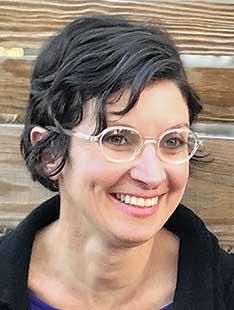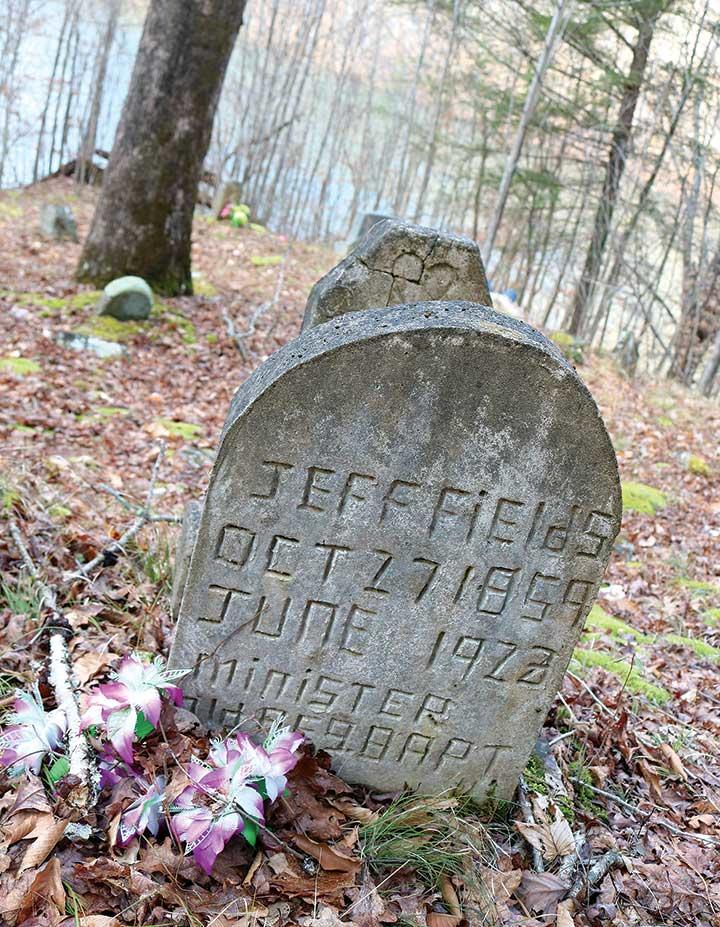Karen Rignall ’92 *94: Understanding Appalachia Through Storytelling
An assistant professor in the University of Kentucky’s Department of Community and Leadership Development and in the Department of Sociology, Rignall obtained a $50,000 public-engagement fellowship from the Whiting Foundation in 2018 to help her undertake a project she has called “Stories of Place in Martin County.” The project enables area high school students and their families to reexamine their community — physically, historically, and socially — to develop a better understanding of what it has been through and what it might become.
In 1964 President Lyndon Johnson visited the tiny town of Inez, Ky., county seat of Martin County, and announced the War on Poverty. Whatever victories that war claims, it is undeniable that Martin County remains one of the poorest places in the U.S. — plagued by unemployment, opioid addiction, and environmental degradation. Those problems have come to define the region in the national consciousness, overshadowing its great natural beauty and a deep cultural heritage. Though countless proposals have been made by government officials, academics, and journalists to address the problems in eastern Kentucky, few have partnered with the residents to ask what they value and what sort of future they envision.

The Middle East is Rignall’s first academic specialty. After receiving an M.P.A. from the Woodrow Wilson School, she earned a master’s degree from the University of Michigan and a Ph.D. from the University of Kentucky, both in cultural anthropology focused on rural Morocco.
Before that, she worked with an Arab-American group based in Dearborn, Mich., and as the Moroccan country director for the Near East Foundation. Though the regions could hardly be more different in many ways, the complex relationship between culture, economy, and land use drew her to the Kentucky mountains, just as it had to the northern Sahara. Both, she notes, are rural, isolated, and crudely stereotyped by the wealthier parts of their countries. Both, too, are filled with people who would prefer to remain where they have grown up rather than seek economic opportunity elsewhere.
Rignall had been working on a study of local land ownership with a nonprofit community group called the Livelihoods Knowledge Exchange Network (LiKEN). Colleagues at LiKEN, as well as community activists Rignall knew, suggested that she base her Stories of Place project in Martin County, specifically at Sheldon Clark High School in Inez.
The project, which got underway in 2018, began slowly, with only a handful of students. With Rignall’s help, they received training in how to conduct field interviews and then went out to talk to family members or older people in the community about their lives. Eventually, they turned four interviews into a nine-minute podcast that they submitted to NPR’s Student Podcast Challenge. It was not selected for broadcast, but Rignall says the students plan to try again this year with new interviews.
The students’ interviews were revealing. Asked what had changed in the county, most of the subjects mentioned the presence of paved roads. One woman said she had missed much of first grade because the school bus could not get down the mile-and-a-half-long mud road to her family’s house. A man praised the teachers he had before noting that he quit school in ninth grade to work. Asked what she missed about life in earlier times, another woman replied, “Being together. You didn’t get to run out and go to town.”
This year, the Stories of Place project has been incorporated into Allison Leip’s 11th-grade language-arts class at the high school, with Rignall’s input and occasional presence in the classroom. Students began the year by marking paper maps of Martin County to indicate the places that are important to them, along with explanations about why. They then took their maps home and asked family members to do the same thing. One student marked his uncle’s house, where he trains hunting dogs, which started a discussion of the horses, cows, and other animals the students use and work with. Two students independently marked an isolated meadow they like to visit for its beautiful views. Using this and other information gathered, the class is developing an interactive map called “The Real Martin County,” which can be layered in succeeding years with new stories and landmarks — a tool rich with information about the area’s history and culture.
In March, the students will take their interactive map, which will also include information gathered in the oral histories, to a student showcase in Frankfort hosted by the Kentucky Valley Educational Cooperative, where they will advocate for more funding for public education. Rignall envisions that the map could inform government officials when they consider legislation affecting the county and might also help attract new businesses. “I want this to help build community for these young people and create a new civic space,” she says. “Anything that increases the participation and voice of some of the most disenfranchised people is not only going to help the county but uplift the whole region.”
Rignall also hopes the project will help students and their families advance difficult conversations about controversial subjects, such as how to clean up the county’s polluted water supply or develop jobs to replace those lost when the coal mines closed. “Residents know that this place is troubled and challenged, but they have an incredible attachment to it,” she says. Marking the places they love, as well as the places that are troubled — weighing the good with the bad — might provide a starting point for productive discussions.
Rignall holds no illusions that an 11th-grade English project will transform Martin County, but she hopes it can enable students and their families to describe their lives and then use that voice to make others hear them. “This is a way for them to own their own narrative.”
Leip believes the project can benefit her students long after they have left Martin County — or perhaps encourage them not to leave at all. “Not all my students are going to college, but their roots go with them wherever they go,” she says. “To have an identity of where they come from, that’s important. It connects them to who they really are and teaches them to be proud of it.”












1 Response
Norman Ravitch *62
5 Years AgoForgotten and/or Unknown
We all think we live in the greatest country in the world. Millions of immigrants and aspiring immigrants to the USA also have and do believe this. And it is true in many ways. Those who have traveled in foreign lands may have a somewhat more nuanced sense of America. But we all know little about the vast but hidden corners of something else in this country. And I don’t just refer to black Americans. Many Americans of a variety of ethnicities and races live lives of quiet desperation, owing to many factors, some not their own fault, some decidedly their own fault. There is the old Victorian distinction between the Deserving Poor and the Undeserving Poor. It’s not certain the elites in Victorian Britain made this distinction in any meaningful way, however. Franklin Roosevelt’s New Deal was one of the few attempts to recognize this problem and to seek to do something about it. For that effort he was called a Fascist, a Communist, and many other things — like a traitor to his class. Everyone should be a traitor to his/her class if anything is going to be done about real problems. Class, race, national origin, religion — they all work to obscure and conceal reality. We all live in something resembling a Potemkin village.